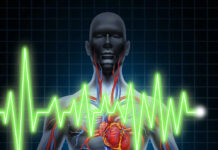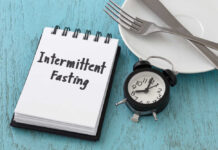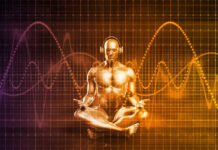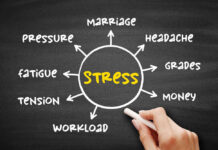
(GoHealthier.com)
A panic attack can feel overwhelming and frightening, with both physical and emotional symptoms that often seem to come on suddenly. Here’s what people commonly experience during a panic attack:
Physical Symptoms
1. Racing Heartbeat or Palpitations: Many people feel their heart pounding hard or racing, which can make it seem like they’re having a heart attack.
2. Shortness of Breath: It may feel difficult to breathe, and some people feel like they’re choking or suffocating.
3. Dizziness or Lightheadedness: Feeling faint or unsteady is common and can add to the fear.
4. Sweating and Chills: Some people experience sweating or alternating between feeling very hot and cold.
5. Shaking or Trembling: The body may start to shake or feel jittery as adrenaline surges.
6. Chest Pain or Tightness: Chest discomfort or pain is often misinterpreted as a sign of a heart attack.
7. Nausea or Stomach Upset: Digestive symptoms, like nausea, cramps, or a feeling of “butterflies” in the stomach, are common.
8. Tingling or Numbness: Hands, feet, or face may feel tingly or numb, which can feel disorienting.
Emotional Symptoms
1. Intense Fear or Dread: People often describe a feeling of impending doom, as though something terrible is about to happen.
2. Fear of Losing Control or “Going Crazy”: The intensity of the sensations can feel so extreme that it may feel like you’re losing control.
3. Fear of Dying: With the heart symptoms and shortness of breath, some people genuinely feel like they’re in life-threatening danger.
4. Disconnection or Derealization: Some people feel detached from their surroundings, like things aren’t real, or feel disconnected from their own body.
Duration
A panic attack typically peaks within 10 minutes but can last from a few minutes to around 30 minutes. Afterward, people often feel exhausted or emotionally drained.
Coping with a panic attack can be challenging, but some strategies can help you manage and reduce the intensity of symptoms. Here are some of the most effective techniques:
1. Practice Deep Breathing
• Panic attacks can cause rapid, shallow breathing, which can make symptoms worse. Try slow, deep breaths:
• Breathe in slowly through your nose for a count of four.
• Hold for a count of four.
• Exhale slowly through your mouth for a count of six.
• Repeat this process, focusing on each breath. Deep breathing helps calm the body’s “fight or flight” response.
2. Ground Yourself
• Grounding techniques can help you feel more connected to the present moment and reduce feelings of fear or disconnection. Try the 5-4-3-2-1 technique:
• Name 5 things you can see around you.
• Name 4 things you can feel (like the texture of your clothes or chair).
• Name 3 things you can hear.
• Name 2 things you can smell.
• Name 1 thing you can taste.
• Grounding exercises like these shift focus away from panic and back to the present moment.
3. Challenge Your Thoughts
• Remind yourself that your symptoms, while intense, are not dangerous. Repeat calming phrases like, “This is a panic attack. It will pass. I am safe.”
• Reframe catastrophic thoughts (e.g., “I’m having a heart attack”) by telling yourself that panic attacks cause physical sensations but aren’t life-threatening.
4. Relax Your Muscles
• Panic can make your muscles tense up. Use progressive muscle relaxation to relieve tension:
• Start by tensing your toes for a few seconds, then release.
• Move to your calves, thighs, stomach, and up to your neck, tensing each area and then letting go.
• Relaxing your muscles can help signal to your brain that it’s safe to calm down.
5. Focus on a Simple Task
• Distracting yourself with a simple task can break the cycle of anxious thoughts. Try counting backward from 100, reciting the alphabet in reverse, or focusing on a specific object and describing it in detail.
6. Stay Where You Are
• It’s common to feel the urge to “escape” when a panic attack hits, but staying in place and allowing the sensations to pass can actually help. Reassure yourself that it will end soon and try to engage with your surroundings to feel grounded.
7. Try Visualization
• Imagine a calm, safe place—like a beach, forest, or favorite spot. Picture the details: the sounds, smells, and sensations you would feel if you were there. Visualization can help bring a sense of peace and safety.
8. Stay Mindful of Caffeine, Sugar, and Alcohol
• Stimulants like caffeine and sugar can exacerbate anxiety symptoms, as can alcohol for some people. Reducing or avoiding these, especially if you’re prone to panic attacks, can be beneficial.
After the Attack
After a panic attack passes, take some time to rest or do something soothing. Over time, you may find it helpful to talk with a therapist about tools for managing panic, and you may want to consider therapies like cognitive-behavioral therapy (CBT) or mindfulness training for long-term management.
Copyright 2024, GoHealthier.com














